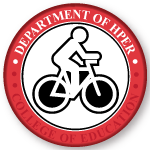Author ORCID Identifier
Document Type
Article
Publication Date
7-7-2016
Publication Title
International Journal of Cardiology
Volume
220
First Page
711
Last Page
717
Abstract
Background
Although cardiac mitochondrial dysfunction is associated with heart failure (HF), this is a complex syndrome with two predominant etiologies, ischemic HF (iHF) and non-ischemic HF (niHF), and the exact impact of mitochondrial dysfunction in these two distinct forms of HF is unknown.
Methods and results
To determine the impact of HF etiology on mitochondrial function, respiration was measured in permeabilized cardiac muscle fibers from patients with iHF (n = 17), niHF (n = 18), and healthy donor hearts (HdH). Oxidative phosphorylation capacity (OXPHOS), assessed as state 3 respiration, fell progressively from HdH to niHF, to iHF (Complex I + II: 54 ± 1; 34 ± 4; 27 ± 3 pmol·s− 1·mg− 1) as did citrate synthase activity (CSA: 206 ± 18; 129 ± 6; 82 ± 6 nmol·mg− 1·min− 1). Although still significantly lower than HdH, normalization of OXPHOS by CSA negated the difference in mass specific OXPHOS between iHF and niHF. Interestingly, Complex I state 2 respiration increased progressively from HdH, to niHF, to iHF, whether or not normalized for CSA (0.6 ± 0.2; 1.1 ± 0.3; 2.3 ± 0.3; pmol·mg− 1·CSA), such that the respiratory control ratio (RCR), fell in the same manner across groups. Finally, both the total free radical levels (60 ± 6; 46 ± 4 AU) and level of mitochondrial derived superoxide (1.0 ± 0.2; 0.7 ± 0.1 AU) were greater in iHF compared to niHF, respectively.
Conclusions
Thus, the HF-related attenuation in OXPHOS actually appears to be independent of etiology when the lower mitochondrial content of iHF is taken into account. However, these findings provide evidence of deleterious intrinsic mitochondrial changes in iHF, compared to niHF, including greater proton leak, attenuated OXPHOS efficiency, and augmented free radical levels.
Recommended Citation
17. Park SY, Diakos NA, Drakos S, Richardson RS. (2016) Mitochondrial respiration in heart failure: impact of ischemia International Journal of Cardiology 220. 711-717 (IF: 4.468) https://doi.org/10.1016/j.ijcard.2016.06.147


Comments
This is an Accepted Manuscript of an article published by Elsevier in International Journal of Cardiology on July 7, 2016, available online: https://doi.org/10.1016/j.ijcard.2016.06.147